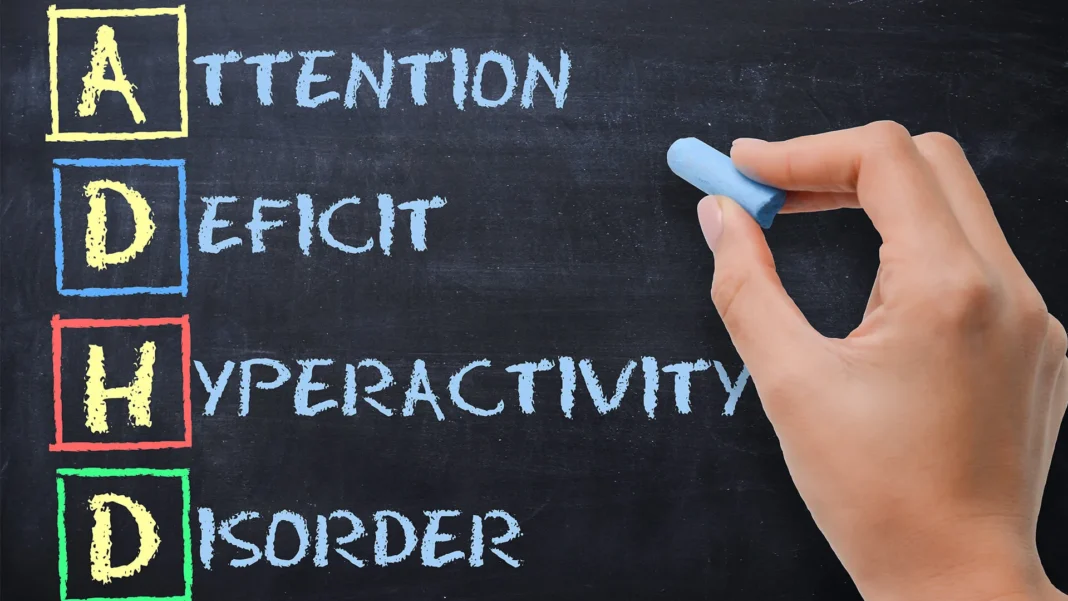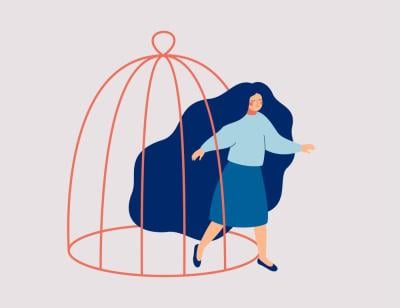ADHD, or Attention-Deficit/Hyperactivity Disorder, is a complex neurological condition that affects millions of people worldwide. Despite being one of the most common neurodevelopmental disorders, it is often misunderstood, leading to stigma and misconceptions. This comprehensive guide aims to shed light on what ADHD truly is, its symptoms, causes, treatment options, and how individuals can manage their lives with this condition.
What is ADHD?
Definition of ADHD
Attention-Deficit/Hyperactivity Disorder (ADHD) is a chronic condition characterized by persistent patterns of inattention, hyperactivity, and impulsivity that interfere with daily functioning or development. It affects both children and adults, manifesting in various ways depending on the individual. ADHD is not simply a matter of being unable to focus; it’s a neurological disorder that requires understanding and appropriate management.
The History and Evolution of ADHD Diagnosis
The concept of ADHD has evolved over the years. Initially, in the early 20th century, it was referred to as “hyperkinetic impulse disorder.” Over time, with advances in psychology and neuroscience, the understanding of ADHD has grown, leading to more accurate diagnosis and better treatment options. The term ADHD was officially adopted in the late 20th century, reflecting a broader understanding of the disorder beyond just hyperactivity.
The Prevalence of ADHD
ADHD Statistics in Children
ADHD is one of the most common neurodevelopmental disorders in children. According to the Centers for Disease Control and Prevention (CDC), approximately 6.1 million children in the United States have been diagnosed with ADHD at some point. This accounts for about 9.4% of children aged 2-17 years. Boys are more likely to be diagnosed with ADHD than girls, although this may be due to differences in symptom presentation.
ADHD in Adults
While ADHD is often associated with childhood, it doesn’t disappear with age. Many adults continue to experience symptoms, although they may manifest differently than in children. Studies suggest that around 4.4% of adults in the U.S. have ADHD, but many are undiagnosed. Adult ADHD can impact work performance, relationships, and overall quality of life, making awareness and treatment crucial.
ADHD symptoms can vary widely, but they generally fall into three core categories: inattention, hyperactivity, and impulsivity. Understanding these symptoms and the different types of ADHD is essential for accurate diagnosis and effective management.
The Core Symptoms of ADHD
Inattention
Inattention in ADHD is characterized by difficulty sustaining focus, following through on tasks, and organizing activities. Individuals with this symptom may frequently make careless mistakes, have trouble listening, and often lose items necessary for tasks. Inattention is not just about being distracted; it involves a chronic struggle to maintain focus, even on tasks that the individual finds interesting.
Hyperactivity
Hyperactivity in ADHD refers to excessive movement and difficulty staying still. This may manifest as constant fidgeting, running or climbing in inappropriate situations, and an inability to play or engage in activities quietly. In adults, hyperactivity may be less overt but can still present as restlessness and a constant need to be active.
Impulsivity
Impulsivity in ADHD involves acting without thinking and having difficulty with self-control. This can lead to interrupting others, making hasty decisions, and taking risks without considering the consequences. Impulsivity can be particularly challenging, leading to social difficulties and increased risk-taking behavior.
The Three Main Types of ADHD
Predominantly Inattentive Presentation
This type of ADHD is characterized mainly by symptoms of inattention. Individuals with this type may struggle with staying focused, following instructions, and completing tasks but may not display significant hyperactivity or impulsivity. It is more commonly diagnosed in girls and can often go unnoticed because it doesn’t involve disruptive behavior.
Predominantly Hyperactive-Impulsive Presentation
In this type, hyperactivity and impulsivity are the dominant symptoms. Individuals may find it difficult to stay still, talk excessively, and act without thinking. This type is often identified earlier in life because the symptoms are more noticeable, particularly in structured environments like schools.
Combined Presentation
The most common type of ADHD is the Combined Presentation, where individuals display a mix of inattention, hyperactivity, and impulsivity. This type can be particularly challenging as it involves managing a broader range of symptoms, each requiring different strategies for coping and treatment.
The exact cause of ADHD remains unclear, but research points to a combination of genetic, environmental, and neurological factors. Understanding these causes and risk factors can help in managing the condition more effectively.
Genetic Factors
ADHD tends to run in families, suggesting a strong genetic component. Studies have shown that if a parent has ADHD, their child has a higher chance of developing the disorder. Specific genes involved in dopamine regulation, a neurotransmitter linked to attention and reward pathways in the brain, are often implicated in ADHD.
Environmental Factors
Environmental factors can also play a role in the development of ADHD. Exposure to lead, prenatal exposure to alcohol or tobacco, premature birth, and low birth weight have all been associated with an increased risk of developing ADHD. Additionally, early childhood trauma or significant stress may contribute to the onset of symptoms.
Brain Structure and Function
Neurotransmitter Imbalances
ADHD is associated with imbalances in neurotransmitters, particularly dopamine and norepinephrine. These chemicals play crucial roles in attention, motivation, and executive function. An imbalance can lead to the symptoms commonly seen in ADHD, such as difficulty focusing and controlling impulses.
Brain Imaging Studies
Brain imaging studies have shown that individuals with ADHD often have differences in brain structure and activity. For example, the prefrontal cortex, responsible for decision-making, impulse control, and attention, tends to be smaller or less active in people with ADHD. These findings provide a biological basis for the disorder, underscoring the fact that ADHD is not simply a behavioral issue but a neurological one.
Diagnosing ADHD
Diagnosing ADHD can be complex, as it requires a thorough evaluation by a healthcare professional. There’s no single test for ADHD, and the diagnostic process involves multiple steps to ensure accuracy.
The Diagnostic Process
Clinical Assessments and Questionnaires
The diagnosis of ADHD typically involves clinical assessments and the use of standardized questionnaires to evaluate symptoms. These tools help clinicians determine the severity and impact of symptoms on daily life. Input from parents, teachers, or employers is often sought to provide a comprehensive view of the individual’s behavior across different settings.
The Role of Medical History
A detailed medical history is crucial in diagnosing ADHD. It helps rule out other conditions that might mimic ADHD symptoms, such as anxiety, depression, or learning disabilities. Understanding the individual’s developmental history, including any prenatal or early childhood factors, is also important in making an accurate diagnosis.
Challenges in Diagnosis
Misdiagnosis and Comorbidity
ADHD is often misdiagnosed, partly because its symptoms overlap with other conditions like anxiety, depression, or autism. Comorbidity, where an individual has more than one disorder, can also complicate the diagnosis. For example, a child with both ADHD and anxiety may display a mix of symptoms that make it difficult to determine the primary issue.
H3: Gender Differences in Diagnosis
ADHD is more commonly diagnosed in boys than girls, which may be due to differences in how symptoms manifest. Boys are more likely to display hyperactive and impulsive behaviors, which are more noticeable in school settings. Girls, on the other hand, may exhibit inattention without hyperactivity, leading to underdiagnosis or misdiagnosis as other conditions, such as anxiety or depression.
There is no cure for ADHD, but several treatment options can help manage symptoms and improve quality of life. Treatment typically involves a combination of medication, therapy, and lifestyle changes tailored to the individual’s needs.
Medication
Stimulant Medications
Stimulant medications, such as methylphenidate (Ritalin) and amphetamines (Adderall), are the most commonly prescribed treatments for ADHD. They work by increasing levels of dopamine and norepinephrine in the brain, which helps improve attention and reduce impulsivity and hyperactivity. While effective for many, these medications can have side effects, such as insomnia, appetite loss, and increased heart rate.
Non-Stimulant Medications
For individuals who cannot tolerate stimulants or for whom stimulants are ineffective, non-stimulant medications like atomoxetine (Strattera) or guanfacine (Intuniv) may be prescribed. These medications work differently from stimulants, often by affecting norepinephrine pathways, and may take longer to show benefits. They are generally considered to have fewer side effects.
Behavioral Therapy
Cognitive Behavioral Therapy (CBT)
Cognitive Behavioral Therapy (CBT) is a widely used approach for treating ADHD. It helps individuals develop skills to manage their symptoms, such as organization, time management, and problem-solving. CBT can also address associated issues like low self-esteem and anxiety, making it a comprehensive treatment option.
Parent-Child Interaction Therapy (PCIT)
Parent-Child Interaction Therapy (PCIT) is designed to improve the parent-child relationship, which can be strained by the challenges of ADHD. PCIT focuses on enhancing communication, setting clear expectations, and reinforcing positive behaviors. It is particularly effective for younger children with ADHD, helping parents manage behaviors in a supportive and structured way.
Lifestyle and Dietary Changes
The Role of Nutrition
Diet can play a role in managing ADHD symptoms. Some studies suggest that certain food additives and sugar may exacerbate symptoms, though the evidence is mixed. However, a balanced diet rich in whole foods, omega-3 fatty acids, and essential vitamins and minerals can support overall brain health and potentially improve ADHD symptoms.
Exercise and ADHD
Regular physical activity is beneficial for individuals with ADHD, as it helps reduce hyperactivity and improve focus. Exercise increases the production of neurotransmitters like dopamine and norepinephrine, which are often imbalanced in ADHD. Activities that require sustained attention, such as martial arts or yoga, can be particularly helpful.
Living with ADHD
Living with ADHD can present challenges, but with the right strategies and support, individuals can lead successful and fulfilling lives. Whether in school, work, or social settings, understanding how ADHD affects different areas of life is key to developing effective coping mechanisms.
ADHD in School and Work Settings
Academic Challenges
Students with ADHD often face academic challenges due to difficulties with attention, organization, and time management. These challenges can lead to underperformance, frustration, and a negative self-image. However, with appropriate accommodations, such as extended test time or seating arrangements that minimize distractions, students with ADHD can thrive academically.
Coping Strategies in the Workplace
In the workplace, adults with ADHD may struggle with tasks that require sustained focus, organization, and meeting deadlines. Strategies such as breaking tasks into smaller steps, using reminders and alarms, and creating a structured routine can help manage these challenges. Employers who understand ADHD can also make accommodations, such as providing flexible schedules or allowing for more frequent breaks.
Social and Emotional Impacts
Relationships and ADHD
ADHD can impact relationships, as symptoms like inattention or impulsivity may be misinterpreted as disinterest or rudeness. Open communication and understanding are essential in managing these challenges. Couples therapy or family counseling can also be beneficial in addressing the impact of ADHD on relationships.
Self-Esteem and Mental Health
Many individuals with ADHD struggle with low self-esteem, often as a result of years of criticism or misunderstanding from others. This can lead to co-occurring mental health issues such as depression or anxiety. Building self-esteem involves recognizing strengths, setting achievable goals, and seeking support when needed.
ADHD affects individuals differently at various stages of life. Recognizing the unique challenges and needs of each age group can help in providing appropriate support and interventions.
ADHD in Children
Early Childhood Signs
ADHD symptoms can appear as early as preschool age. Early signs include constant movement, trouble sitting still, difficulty following directions, and frequent tantrums. Early diagnosis and intervention are crucial in helping children develop coping strategies and receive the support they need.
The Importance of Early Intervention
Early intervention for ADHD can make a significant difference in a child’s development. Behavioral therapies, educational accommodations, and, if necessary, medication can help manage symptoms and improve outcomes. Parents play a critical role in advocating for their child’s needs and ensuring they receive appropriate care.
ADHD in Adolescents
Academic Pressure and ADHD
Adolescence is a time of increased academic pressure, which can be particularly challenging for students with ADHD. The demands of more complex coursework, combined with social and emotional changes, can exacerbate symptoms. Support from teachers, parents, and counselors is vital in helping adolescents manage these pressures.
Peer Relationships and ADHD
Maintaining friendships can be difficult for adolescents with ADHD, as impulsivity and difficulty understanding social cues can lead to misunderstandings or conflicts. Teaching social skills and providing opportunities for positive peer interactions can help adolescents with ADHD build and maintain healthy relationships.
ADHD in Adults
Career Challenges
Adults with ADHD may face challenges in the workplace, such as difficulty with time management, organization, and meeting deadlines. These challenges can impact career progression and job satisfaction. However, with the right strategies and accommodations, adults with ADHD can excel in their careers. Many adults find that careers that allow for creativity, flexibility, and autonomy are particularly well-suited to their strengths.
Managing ADHD in Daily Life
Managing ADHD in daily life requires a combination of strategies tailored to individual needs. This might include using organizational tools, establishing routines, and seeking support from family, friends, or support groups. Mindfulness practices, such as meditation, can also help in managing symptoms by improving focus and reducing stress.
Despite increased awareness, many myths and misconceptions about ADHD persist. These misunderstandings can lead to stigma and barriers to effective treatment.
ADHD is Just an Excuse for Laziness
One of the most common misconceptions is that ADHD is simply an excuse for laziness or lack of effort. In reality, ADHD is a neurological disorder that makes it genuinely difficult for individuals to focus, organize, and follow through on tasks. It’s not about laziness but rather about the brain’s ability to regulate attention and impulses.
Only Boys Have ADHD
Another myth is that ADHD only affects boys. While boys are more frequently diagnosed, ADHD affects individuals of all genders. Girls with ADHD are often underdiagnosed because they are more likely to present with inattentive symptoms, which are less disruptive and therefore less likely to be noticed.
ADHD is a Childhood Disorder Only
Some people believe that ADHD is a condition that children outgrow. However, ADHD often persists into adulthood, with many adults experiencing symptoms that impact their daily lives. While symptoms may change or become less intense with age, the challenges of ADHD can continue throughout life.
In conclusion, ADHD is a complex and multifaceted disorder that affects millions of people across all age groups. Understanding ADHD requires recognizing the symptoms, acknowledging the challenges, and providing the necessary support and treatment. By raising awareness and dispelling myths, we can create a more inclusive environment where individuals with ADHD can thrive.
FAQs
What is the most common treatment for ADHD?
The most common treatment for ADHD is a combination of stimulant medications and behavioral therapy. Stimulants, such as Ritalin and Adderall, are effective for many people in managing symptoms. Behavioral therapy helps individuals develop coping strategies to manage their symptoms in daily life.
Can ADHD be cured?
There is currently no cure for ADHD, but the condition can be managed with the right treatment and support. Many individuals with ADHD lead successful and fulfilling lives by using a combination of medication, therapy, and lifestyle adjustments.
Is ADHD overdiagnosed?
There is ongoing debate about whether ADHD is overdiagnosed. Some experts believe that ADHD is underdiagnosed in certain populations, such as girls or adults, while others are concerned that the condition is overdiagnosed in children. Accurate diagnosis requires a thorough evaluation by a healthcare professional.
How can I support someone with ADHD?
Supporting someone with ADHD involves understanding their challenges and being patient. Encourage them to seek treatment, help them stay organized, and be supportive of their efforts to manage their symptoms. Educating yourself about ADHD can also help you provide better support.
Can adults suddenly develop ADHD?
ADHD is typically diagnosed in childhood, but some adults may be diagnosed later in life if their symptoms were not recognized earlier. ADHD does not suddenly develop in adulthood, but increased awareness of the condition and its symptoms can lead to a late diagnosis in some adults.




